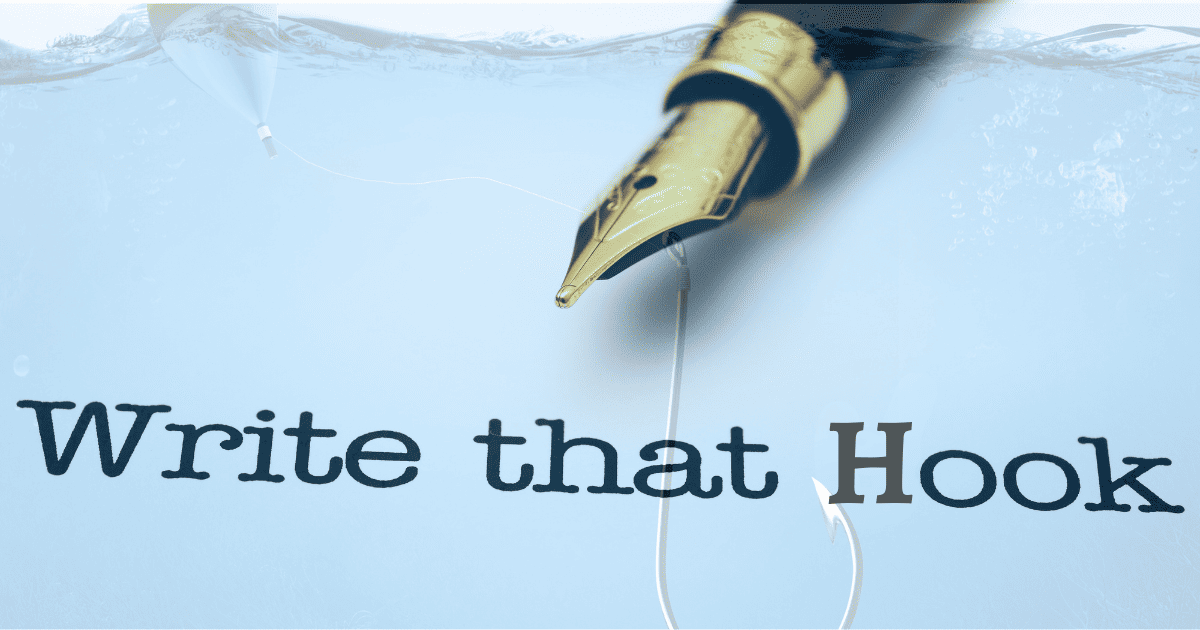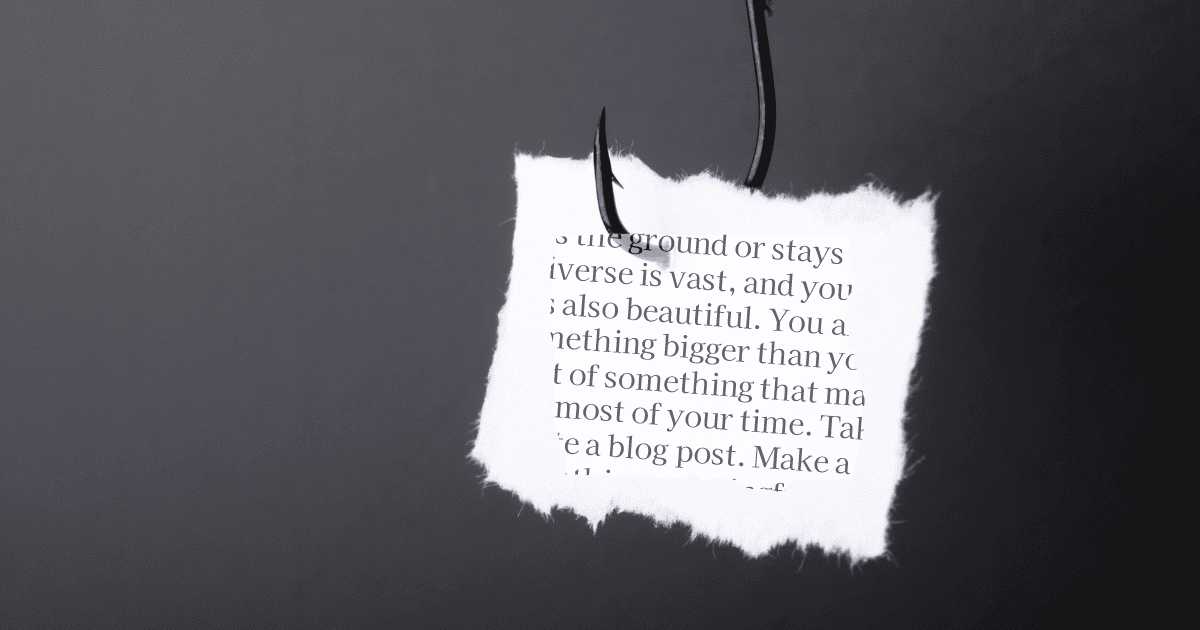Have you ever been reading a book or watching a movie and found yourself instantly captivated by the first few lines or scenes? Every writer strives for that feeling of being hooked and wanting to continue experiencing the story! But what makes a good hook? This article will discuss how to create an effective hook.
With hooks, there’s not just one formula for every piece of content. However, there are certain techniques that are successful in grabbing the audience’s attention.
A good hook often involves creating intrigue or curiosity. It might be an engaging conflict or mystery, or even posing a thought-provoking question. Good writing hooks should make the reader or viewer eager to find out more and continue on their journey with your story.
In this article, we’ll explore these techniques further and provide you with tips on how you can improve your hooks to make your writing or storytelling more interesting. So, let’s unlock the secrets to creating a captivating hook that will keep your audience craving for more.
What is a hook?
Definition of a hook
A hook is a literary device used to begin a piece of writing to draw the reader’s attention and engage them in the content. It serves as an introduction, enticing the reader to continue reading and explore what the writing offers.
Purpose of a hook
The primary purpose of a hook is to captivate the reader and make them want to learn more. It attracts and keeps readers’ interest.
Qualities of a good hook
The goal is to make the reader feel compelled to continue reading and discover what comes next. By effectively capturing the reader’s attention, a good hook sets the stage for a compelling and engaging piece of writing.

Engaging and attention-grabbing
A good hook must be able to capture the reader’s attention from the very beginning. It should intrigue, compel, or even shock, leaving the reader with a desire to discover more about the topic being discussed.
Relevant to the topic
The hook should have a direct relation to the main idea or subject of the writing. It should provide a glimpse of what is coming and give the reader a sense of what they can expect from the piece.
Creates curiosity or suspense
A successful hook should ignite the reader’s curiosity, making them eager to uncover the answers to questions or mysteries presented. By creating a sense of suspense or anticipation, the writer encourages the reader to continue reading and explore further.
Different hooks
An anecdote or personal story
One effective way to hook the reader is by sharing a personal anecdote or story that relates to the topic at hand. By starting with a relatable experience, the writer can connect with the reader emotionally and draw them into the content.
Startling statistic or fact
Using a startling statistic or fact to begin an article can be a powerful way to capture the reader’s attention. Unexpected information prompts the reader to investigate further.
Provocative question
Posing a thought-provoking question to start an article can spark the reader’s curiosity and engage them in the content. The writer can invite further exploration by encouraging the reader to consider different viewpoints.
Famous quote
Beginning an article with a well-known quote can help prove the writer’s ability and create an association with the reader. Quotes can add credibility and interest to the writing and help draw in readers.
Vivid description
Painting a vivid picture with words can be a captivating way to start an article. The writer can create a strong emotional connection and capture the reader’s attention by appealing to their senses.

Techniques to create a good hook
Using descriptive language
To create an engaging hook, the writer should use descriptive language that evokes imagery and engages the reader’s senses. Captivating descriptions can make the reader eager to learn more.
Creating contrast or contradiction
A good hook can challenge assumptions and expectations. Unexpected elements can capture readers’ attention.
Appealing to emotions
By tapping into the reader’s emotions, a writer can set up a strong connection and make their hook more interesting. This can be done through humor, empathy, or a sense of urgency. Appealing to the reader’s emotional side can draw them in and spark their interest.
Highlighting the problem or challenge
Identifying a problem or pain point that the reader can relate to can be an effective way to engage them from the beginning. Showing the reader a problem they want to solve engages them.
Establishing credibility or authority
We can strengthen a hook by establishing the writer’s credibility or authority on the topic. Relevant expertise, credentials, or accomplishments can help gain reader trust and encourage them to continue reading.
Examples of effective hooks

Hook example 1 – Anecdote
Imagine sitting on a crowded bus, feeling the weight of the world pressing down on your shoulders. Suddenly, a stranger’s unexpected act of kindness changes the course of your day and reminds you of the goodness that exists in the world. Get ready to embark on a journey of heartwarming stories as we explore the power of human kindness.
Hook example 2 – Startling statistic
Every minute, people dump over 3 million pieces of plastic waste into the world’s oceans.? This alarming statistic is just the tip of the iceberg in the global plastic pollution crisis. Join us as we delve into the impact of plastic waste on our planet and explore sustainable solutions for a cleaner future.
Hook example 3 – Provocative question
Have you ever wondered what your life would be like if time travel were possible? Imagine being able to witness historical events firsthand or correct past mistakes. In this article, we delve into the concept of time travel and explore its implications as we go on a thought-provoking journey through time.
Hook example 4 – Famous quote
As Albert Einstein famously stated, “Imagination is more important than knowledge.” In this article, we dive deep into the realm of imagination and its profound impact on creativity, problem-solving, and personal growth. Get ready to unleash your imagination and unlock the limitless possibilities within.
Hook example 5 – Vivid description
Picture this: a soft, golden sunset casting its warm glow over a picturesque meadow, while the gentle breeze dances through the fields of wildflowers. In this article, we invite you to escape the chaos of everyday life and discover the healing power of nature. Join us as we embark on a journey of serenity and self-discovery.
Common mistakes to avoid

Being too vague or generic
A hook should be specific and interesting, not generic or overly broad. Capture the reader’s interest without revealing too much!
Using clichés
We should avoid clichés at all costs when crafting a good hook. These overused phrases can make the writing appear unoriginal and uninspiring. Instead, strive for uniqueness and authenticity to captivate the reader.
Including unnecessary details
A hook should be to the point, without overwhelming the reader with unnecessary information. Avoid including excessive details or background information that may distract from the key message and dilute the impact of the hook.
Overusing rhetorical questions
While rhetorical questions can be effective hooks, their impact lessens when overused. Too many rhetorical questions can make writing contrived and disengage readers.
Ignoring the relevance of the topic
A hook should always apply to the topic being discussed. A weak connection between the hook and the content can confuse readers, diminishing their interest..
The importance of a good hook
Attracting the reader’s attention
In a world saturated with information, a good hook is crucial in capturing the reader’s attention. It serves as the gateway to the content. This entices readers to explore further and invest their time and energy into the piece.
Creating a positive first impression
The first few sentences of an article can shape the reader’s perception of the entire piece. A well-crafted hook can leave a lasting impression and set a positive tone for the rest of the writing, instilling confidence and curiosity in the reader.
Increasing reader engagement
A strong hook can significantly affect reader engagement. Grabbing the reader’s attention from the beginning encourages an engaging reading experience.
Setting the tone for the content
The hook establishes the tone and direction of the piece, providing a glimpse into what the reader can expect. It sets the reader’s expectations for the rest of the content.
Tips for improving your hook
Know your target audience
Understanding your target audience is essential in crafting an effective hook. Create a hook that appeals to their interests.
Experiment with different hooks
Be willing to experiment with various types of hooks to find what works best for your audience. Mix anecdotes, stats, questions, quotes, and descriptions to create interesting hooks.
Seek feedback from others
Feedback is invaluable for improving your hooks! Share your writing with trusted individuals and gather their opinions on the effectiveness of your hooks. Their fresh perspective can offer valuable insights and suggestions for improvement.
Study successful hooks in similar content
Take the time to analyze hooks that have successfully captured YOUR attention. Examine the techniques and elements that made those hooks effective and use them in your own writing. Learning from successful examples can improve your own hook-writing skills.
Crafting a good hook is essential in capturing your reader’s attention and creating a strong first impression. Use interesting hooks to increase reader engagement and create an enjoyable reading experience.
Remember to analyze your target audience, experiment with different hooks, seek feedback, and study successful examples to improve your hook-writing skills.
So, why not go for it? Create hooks that leave a lasting impact on your readers and elevate your writing to new heights.

